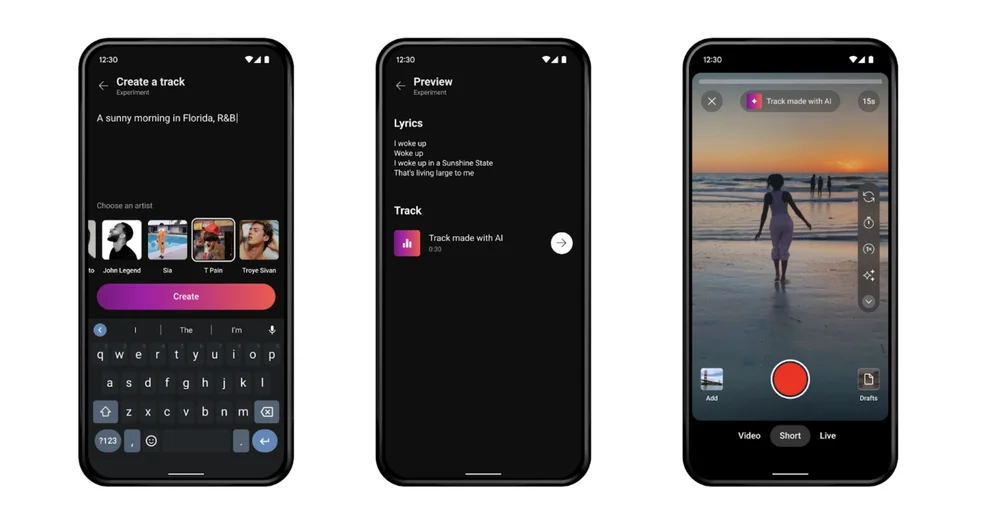Table of Contents
In the realm of music, where creativity knows no bounds, the integration of artificial intelligence (AI) is heralding a new era of innovation. AI-powered music tools are transforming the landscape of music creation, offering musicians and composers unprecedented opportunities to explore uncharted musical territories. In this blog post, we’ll take an early look at the possibilities that emerge as YouTube experiments with AI and music, ultimately reshaping the future of music creation.
AI in Music: A Harmonious PartnershipAI in Music: A Harmonious Partnership
The fusion of AI and music is not a recent phenomenon. It’s a journey that began with the exploration of how AI can assist musicians and composers in their creative processes. Today, AI has evolved into a powerful collaborator, providing valuable insights, and suggestions, and even generating musical compositions.

The Role of Music AI Tools
Music AI tools encompass a wide range of applications, from generating melodies to analyzing intricate patterns within musical compositions. These tools leverage machine learning algorithms to understand the nuances of music, enabling them to create harmonious compositions that resonate with the human spirit.
1. Melody Generation and Harmonization
One of the most remarkable applications of Music AI tools is in melody generation and harmonization. These tools can analyze existing melodies, identify key patterns, and generate new musical sequences that blend seamlessly with the original composition. This capability not only accelerates the music composition process but also opens doors to fresh musical ideas.
2. AI-Driven Composition Assistance
Composers and musicians often face creative blocks during the composition process. Music AI tools act as reliable companions, offering suggestions for chord progressions, instrumentation, and even lyrics. This collaborative approach sparks creativity and paves the way for unique musical expressions.
3. Enhancing Music Production
In the realm of music production, AI plays a pivotal role in fine-tuning audio quality. From automated mixing and mastering to noise reduction and audio restoration, AI-powered tools ensure that the final musical output is nothing short of perfection.
4. Music Analysis and Recommendation
Streaming platforms like YouTube have harnessed the power of AI to analyze user preferences and recommend music tailored to individual tastes. This personalization enhances the listening experience, introducing listeners to a diverse range of musical genres and artists.
YouTube’s AI Music Experiment
YouTube, a platform synonymous with music discovery, has been at the forefront of the AI and music revolution. Their AI music experiment has demonstrated the potential of AI in enhancing the music creation and listening experience by the introduction of Music AI tools and versatile YouTube intro templates.
AI feature in YouTube shorts
A track made with AI

Ensuring the Authenticity of AI-Generated Audio with SynthID
- Responsible Deployment: As we explore the potential of AI in music, its responsible use is a priority too. SynthID is a cutting-edge toolkit for watermarking and identifying AI-generated audio content, ensuring transparency and accountability.
- Inaudible Watermark: SynthID seamlessly integrates inaudible digital watermarks into AI-generated audio. These watermarks are undetectable by the human ear, preserving the listening experience.
- Visual Spectrogram: The innovative approach involves converting audio into visual spectrograms, capturing the frequency spectrum’s evolution over time. This revolutionary technique enhances audio watermarking, especially in the context of music.
- Resilient and Adaptive: SynthID’s watermarks remain detectable even when audio content undergoes common modifications like noise addition, compression, or tempo changes. It ensures the watermark’s integrity throughout the track.
- Identification Capabilities: Beyond watermarking, SynthID can detect these watermarks throughout an entire audio track, aiding in the identification of AI-generated segments. This fosters transparency and accountability in music creation.
With SynthID, we’re not just pushing the boundaries of AI-driven music but also upholding values of authenticity and trustworthiness. It’s a pioneering step towards a future where AI and music coexist harmoniously while maintaining creative integrity.
Collaboration and Innovation
One of the most exciting aspects of AI in music is its capacity to foster collaboration between humans and machines. Musicians and composers are no longer limited by traditional boundaries; they are free to experiment with AI-generated compositions, infusing their unique style and emotions into the music.
Recently Music AI tools made us achieve what seemed unimaginable: reuniting the voices of John, Paul, George, and Ringo for a final collaborative masterpiece of “The Beatles” – Now and Then. Click here to read more.
The Future of Music Creation
As we journey further into the world of AI and music, the possibilities are limitless. Music AI tools will continue to evolve, enabling musicians to push the boundaries of creativity. The music of the future will be a harmonious blend of human ingenuity and AI-driven innovation, transcending genres and captivating the hearts of listeners worldwide.
Stay Tuned for the Symphony of Tomorrow
In conclusion, the early experiments with AI and music have already yielded remarkable results. Music AI tools are poised to transform the music industry, offering musicians and composers a wealth of possibilities for artistic expression. The future of music creation is bright, promising a symphony of innovation that will echo through generations to come.